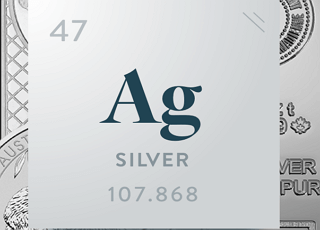Silver trading and how to succeed
Silver trading is a crucial and valuable industrial metal for producers and investors, and thanks to its history of being used as currency, silver trading has become a real asset. Silver is commonly recognized as being able to retain its value while fiat currency fluctuates.

It's often called "poor man's gold" because it sells at just a fraction of the price that gold does. Both gold and silver come from the Earth's crust, and both are used to manufacture jewelry and coins. Despite this, gold is valued at about $1,800 an ounce, while silver is just $27.
This difference is simple-- silver serves an industrial purpose while gold is treated more like insurance. People and governments purchase gold to retain buying power. If there were a total collapse of fiat currencies, precious metals would still be deemed inherently valuable, while cash may be regarded as garbage.
As a result, gold and the dollar tend to share an inverse relationship. As the dollar rises in value, gold tends to fall, as it will take fewer dollars to purchase one ounce of gold due to the fluctuation in buying power. Conversely, as the price of the dollar falls, gold tends to gain value. Most gold is stored rather than used in the manufacturing of jewelry or other trinkets held for this purpose.
Silver has many industrial uses, from making silverware or parts for cars. Because it is predominantly industrial, fewer people purchase it to store value.
Silver trading and the Hunt brothers
There is a story about silver trading. A rich man in Texas, named William Hunt, was one of the wealthiest people in the 1970s, owning plenty of land with substantial oil deposits. After he died, his estate went to his two sons, who had studied the gold market surge. They decided to invest in silver futures, pouring all of their wealth into it, believing that it would reach the price of gold one day. They even borrowed money to finance their silver further.
They alone managed to raise the price of white metal to more than $50/ounce due to demand with trading silver. However, in the late 1970s, the Commodities and Futures Trading Commission (CFTC) declared that no individual could own more than 3 million silver ounces. As a result, the price of silver plummeted. Their lenders demanded the money back, and they soon fell into bankruptcy.
Among the traders, silver trading is the most difficult, and this process can be the riskiest. While both silver and gold are related, they share an inverse relation. Healthy economies prioritize require more silver. This more robust economy also tends to drive the price of gold down.
To trade silver successfully, you need to understand the foundation and how to perform technical analysis. As you do, you will see that silver tends to move significantly in a short period, then stall. The price has been incredibly volatile, rising, then remaining stagnant because there is virtually no liquidity in the LME (London Metal Exchange) silver market except massive paper shorting of silver on the Comex Exchange.
New traders should focus on silver trading as a long-term investment vehicle. It is recommended that experienced traders develop a concrete trading strategy, knowing that it is usually different from your typical currencies and stock trade strategies. Taking the time to understand supply chains and demands will be beneficial.
Related articles
Trading and Investing The Markets For Your Real Wealth
With silver protect and grow your wealth